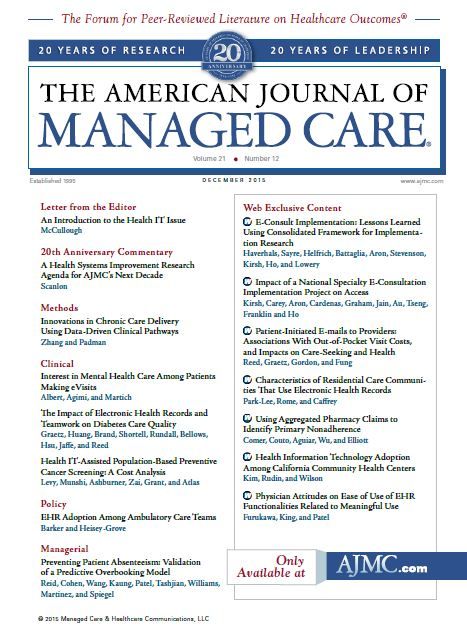- Center on Health Equity & Access
- Clinical
- Health Care Cost
- Health Care Delivery
- Insurance
- Policy
- Technology
- Value-Based Care
An Introduction to the Health IT Issue
Recent policy changes and technological innovation have led to the widespread adoption of electronic health record systems and other forms of health information technology, which are starting to play an increasingly important role in the US healthcare system to improve quality while reducing costs.
Health information technology (IT) plays an increasingly important role in the US healthcare system. These technologies hold the potential to improve quality while reducing costs, and recent policy changes and technological innovation have led to the widespread adoption of electronic health record (EHR) systems. Although EHR systems form a technological foundation for healthcare delivery, the long-run implications of IT for health and healthcare are much broader.
Information and communications technology has become an essential tool for patients to both learn about health and find healthcare services. Many websites facilitate cross-patient communications and support, while patient portals provide new venues for interactions between patients and providers. Finally, these evolving technologies generate an abundance of new data, and the magnitude and complexity of these data require new analytic tools.
The American Journal of Managed Care is committed to understanding and facilitating the use of health IT; however, this is an especially challenging task given the rapid changes in technology, the difficulty in adapting information systems to complex clinical environments, and the evolving nature of IT policy. This challenge requires a multidisciplinary research community and meaningful communication between academia, government, and industry. This issue’s focus on health IT features 13 research articles, and although these articles span a wide range of disciplines and perspectives, their contributions center around 3 topics: the adoption and utilization of EHR systems, the development of new forms of clinical communication, and the use of data analytics to better manage healthcare delivery.
EHRs continue to be the focal point of health IT policy. This focus largely began in 2009 with the passage of the Health Information Technology for Economic and Clinical Health Act; this law, and subsequent modifications, encourages the adoption and meaningful use of EHRs. These systems are central to healthcare delivery as they facilitate cross-provider and team care coordination and serve as the foundation for clinical decision support capabilities. While the potential for improved quality and lower costs are clear, the realization of these benefits will require far-reaching changes to the healthcare process.
Health IT research and policy has largely focused on how information systems can improve the quality and efficiency of existing services. Although this is important, most of the value created by IT in the broader economy comes through the creation of new products and services—and the healthcare industry has long lagged in the development of new IT-enabled services. This issue also explores IT-enabled communications between patients and physicians, as electronic visits and consultations are early, incremental steps in the development of new health IT services.
The rapid growth in health IT has spurred a rapid expansion of digital health information. Patients, physicians, and payers have only just begun to understand how these data may be used, and subsequently, new analytic tools are essential to be able to utilize these data and create value. The fields of computer science, engineering, and statistics have made remarkable innovations in machine learning and big data analytics; yet, while many of these techniques resemble traditional regression analysis and econometric techniques, they can differ greatly in their approach. These methods traditionally focus on prediction, rather than inference, and are well adapted to modeling heterogeneity. Risk adjustment is the most obvious health services research application of machine learning techniques, but they have the potential for broader application.
This issue will help to bring together these many varied topics within the realm of health IT and will explore its importance in the related use of health data in the areas of prescription adherence, visit absenteeism, and screening, among others.

Trends in Hospital Pricing for Vulnerable Emergency Department Users, 2021-2023
December 4th 2025Self-pay emergency department prices rose significantly from 2021 to 2023, especially at for-profit and system-affiliated hospitals, highlighting growing affordability challenges for uninsured and underinsured patients.
Read More
Integrated Care for Chronic Conditions: A Randomized Care Management Trial
December 3rd 2025The authors sought to understand the differential impact of payer-led community-based care management approaches on stakeholder-oriented outcomes for publicly insured adults with multiple chronic conditions.
Read More

